I am Safe Program
RRI Amateur Radio Welfare Messaging
RRI offers a suite of documents and software that can assist in the transmission of welfare related messages from a disaster area. This material was developed as a cooperative effort between the Seattle Emergency Communication Hubs (http://seattleemergencyhubs.org/), Seattle Auxiliary Communication Service (ACS) (https://www.seattleacs.org/), Radio Relay International (radiorelay.org) and the Winlink Development Team (winlink.org). The Northwest Washington American Red Cross provided additional input with regard to the development of short message texts.
Throughout the development and testing process we endeavored to make the processes generally applicable to any situation where welfare/I am safe messages would be sent on behalf of individuals in a disaster area.
The foundation of the program is the traditional radiogram. We have developed a welfare message specific radiogram format with standardized brief messages (RRC TWENTY SEVEN through FORTY). These standardized messages help to keep the messages brief and are also designed to assist a disaster survivor who might be stressed or confused due to the situation in which they have found themselves.
Realizing that different situations will pose a variety of issues and options, the effort not only encompasses the use of the radiogram format but also direct RF-to-Internet messaging for those situations where the client knows either the email address of the recipient or mobile phone number AND service provider. The exact method of transport and delivery is determined by the content of the worksheet (In-take Form) submitted by the client.

While the common application for the initial composition and transmission of the messages is Winlink Express, we have developed two Winlink forms that may be used by shelter volunteers to properly compose radiograms and email/text messages. These forms, the Welfare Radiogram and the Quick Welfare Message are included with Winlink Express but may also be used by data entry volunteers (digitizers) when run independently from a thumb drive. This relieves the radio operators from having to populate the message fields.
The image shown provides and overview of the process for several situations.
IMPORTANT:
Whenever an emergency communications unit, relief organization, RRI registered radio operator, or other radio operator either foresees the need, or commences with the process of originating welfare, priority, or emergency traffic, an ACTIVATION REQUEST MESSAGE must be transmitted to the RRI emergency manager or his designee. This message will activate the RRI National Response Plan, which transitions the traffic infrastructure from routine to emergency configuration. When the plan is activated, volunteers will be mobilized, gateway and DTS connect/download frequencies will be increased, special point-to-point circuits and Priority Entry Point frequencies may be activated, and certain nets may be placed on alternate schedules or continuous operation. A FAILURE TO ACTIVATE THE PLAN MAY RESULT IN DELAYED MESSAGE RELAY AND DELIVERY. The procedure and format for the Activation Request Message can be found in the RRI National Emergency Communications Response Guidelines on the Publications Section of our website.
OVERVIEW DOCUMENTS
SEATTLE HUBS APPROVED PROCEDURES
(NOV. 2023)
- I Am Safe Digitizer Job Description (pdf)
- I Am Safe Intake Form (pdf)
- I Am Safe Intake Form (Spanish espanol) (pdf)
- I Am Safe Intake Table Job Description (pdf)
- I Am Safe Messages Instruction Sign (pdf)
- I Am Safe Messages Quick Start Guide (pdf)
- I Am Safe Messages Standard Operating Procedures (pdf)
